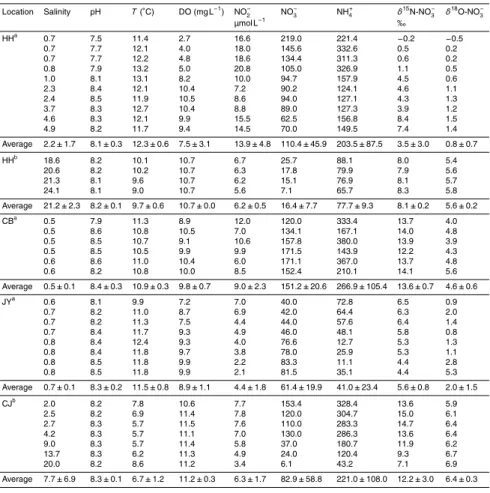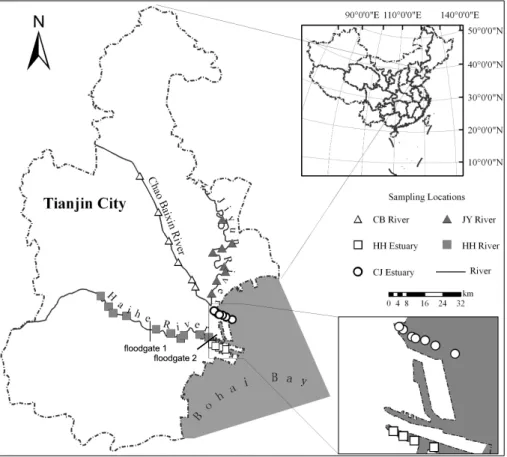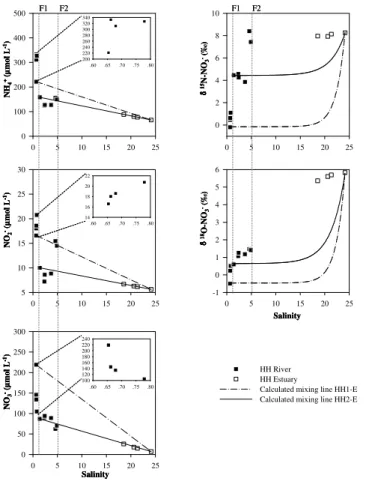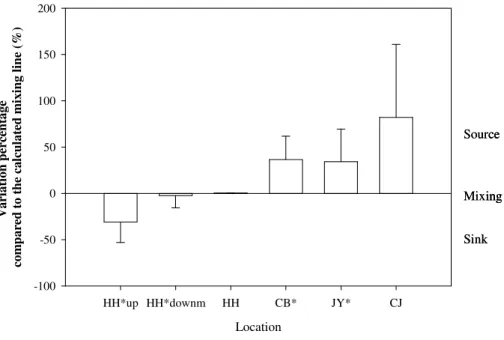Nitrate sources and dynamics in the salinized rivers and estuaries – a <i>δ</i><sup>15</sup>N- and <i>δ</i><sup>18</sup>O-NO<sub>3</sub><sup>–</sup> isotope approach
Texto
Imagem




Documentos relacionados
Big Delta values between the samples and the laboratory standards are also determined for daily measurements, which are used to anchor the individual measurements on the pri- mary
This may be a consequence of the very high sea-ice di ff usivities (SID) that have been allowed in the ensemble leading to increased brine rejection and AABW production. + 0.83 in
Our model can calculate L ∗ based on a sophisticated dynamic magnetic field model at a fraction of the time required for full drift shell integration us- ing a neural network
(b) meridional temperature difference for the Southern Hemisphere (SH) and Northern Hemisphere (NH) for the atmosphere (circles) and ocean (squares); (c) oceanic temperature of
The rate constants determined over the 227 K–400 K range show very low scatter and are significantly greater, by 20% at room temperature and by 15% at 227 K, than the
Fractions of the different source regions of the 10 Be deposition fluxes: stratospheric production, tropospheric tropical production (0–30 ◦ ), subtropical production (30–60 ◦ )
specimens from Antarctica from the mollusk dataset does yield a steeper slope (Table 4) of 0.0402 ± 0.0050 (1 s.e.) on the absolute reference frame, however it does not change
Our method can be used to produce synthetic isotope reference gases for δ 13 C-CH 4 in air at various mixing ratios. Further, additional components (e.g. N 2 O, CO 2 , CO)

